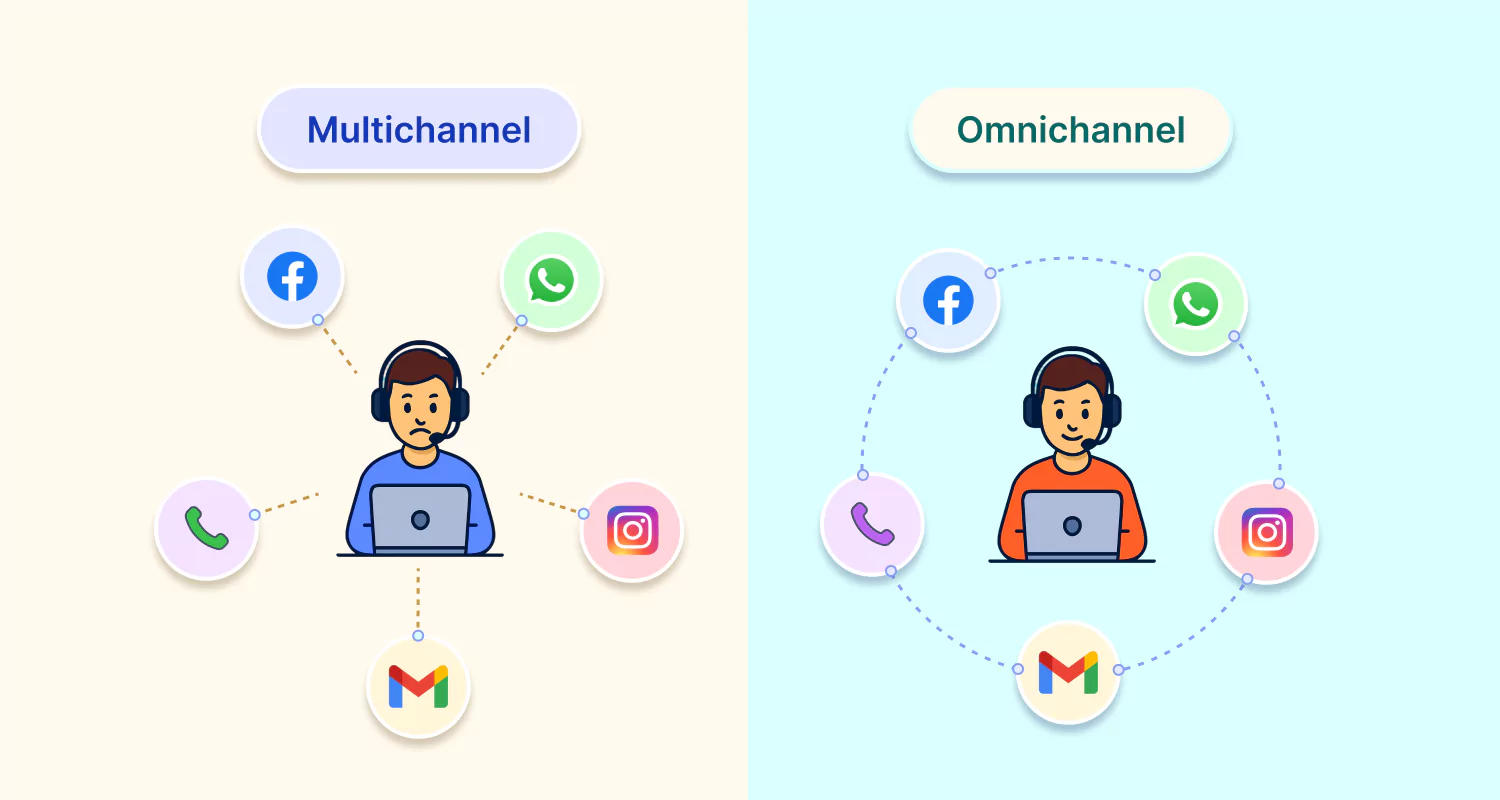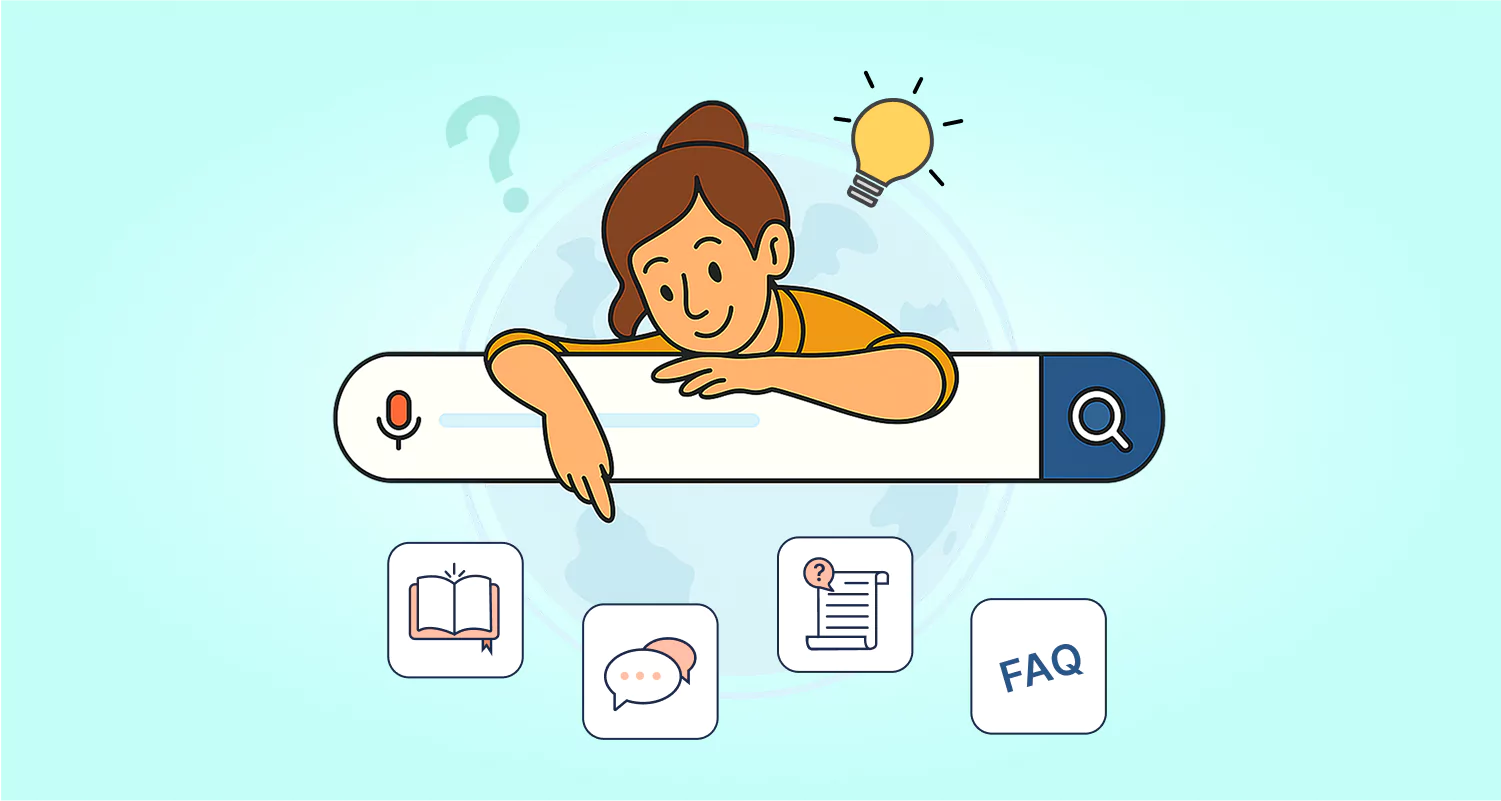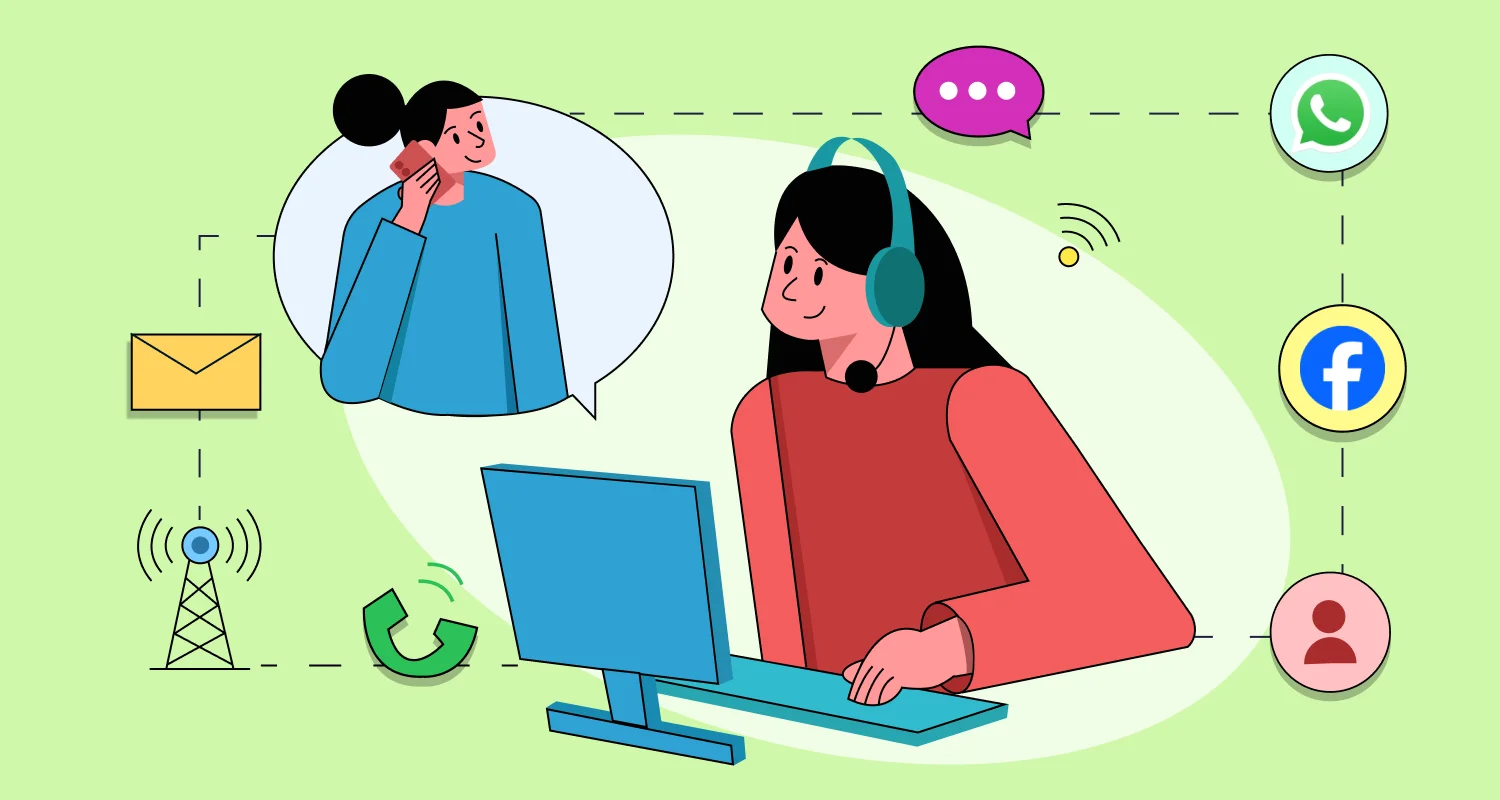Modern customers interact with brands across a wide range of channels, including email, live chat, social media, phone calls, and even in-person visits.
With so many touchpoints available, they expect brands to be present, responsive, and consistent wherever the conversation happens.
To keep up with these growing demands, businesses have turned to two key strategies: multichannel or omnichannel customer support.
While both approaches aim to enhance accessibility and responsiveness, the key difference lies in how they manage and integrate customer interactions.
In this blog, we’ll break down multichannel vs omnichannel customer support, their key differences, and how you can choose the best approach for your support team.
What is multichannel customer support?
Multichannel support is a strategy that allows businesses to assist customers through multiple communication channels, such as phone, email, SMS, live chat, social media, and self-service portals.
With 62% of customers seeking to connect with brands across various digital platforms, this approach gives them the flexibility to choose the method that suits them best.
However, while multichannel customer support offers convenience, it often leads to disconnected experiences. Since each channel operates in isolation, interactions on one platform are typically not linked to those on another.
As a result, customers may need to restart conversations when switching channels, and agents may lack the full context of previous interactions.
What is omnichannel customer support?
Omnichannel support is a connected customer service approach that integrates multiple communication platforms to create a seamless and unified customer experience.
Instead of treating each channel as a separate conversation, omnichannel support ensures that customer interactions are linked and in sync, no matter where they happen.
87% of customers find it frustrating when they need to engage across multiple channels and repeat themselves on every new channel.
Omnichannel support eliminates this pain point by connecting individual touchpoints for a cohesive experience.
Differences between multichannel and omnichannel customer support
Although multichannel and omnichannel support may seem similar, they differ in how channels work together.
Understanding these little differences can help you deliver the seamless experience today’s customers expect.
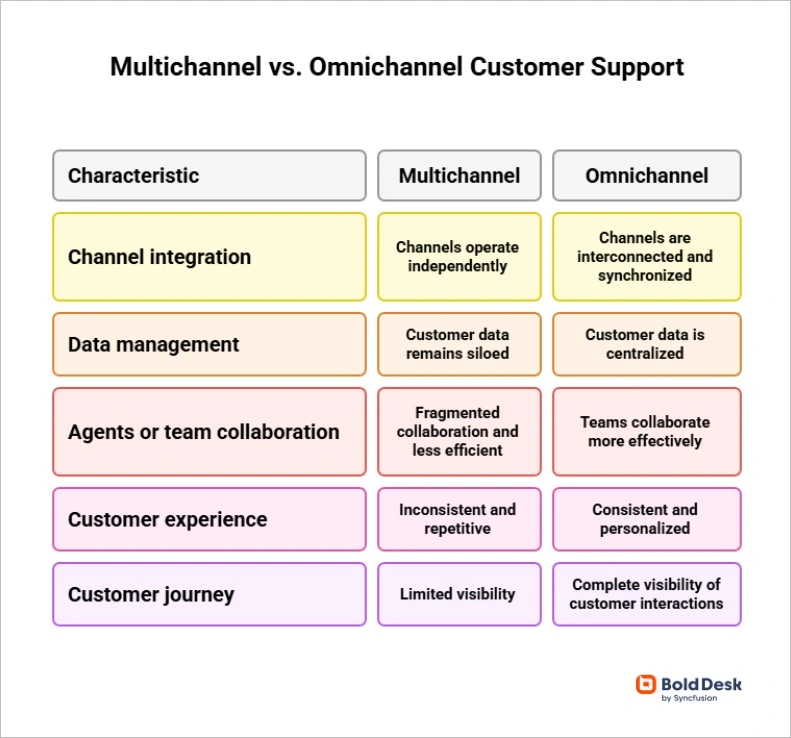
Below are the key differences you need to be aware of.
Channel integration
Multichannel customer support aims to offer customers multiple ways to reach you. However, each channel operates independently, with little to no communication between them.
This channel-centric model focuses on availability rather than consistency, leading to repeated explanations and a disjointed experience.
In contrast, omnichannel customer service is client-centric. It integrates all communication channels into a single, unified system, allowing support agents to access the whole history of a customer’s interactions, regardless of the channel used.
This enables customers to move between channels and still receive a consistent customer experience, no matter how they interact with your brand.
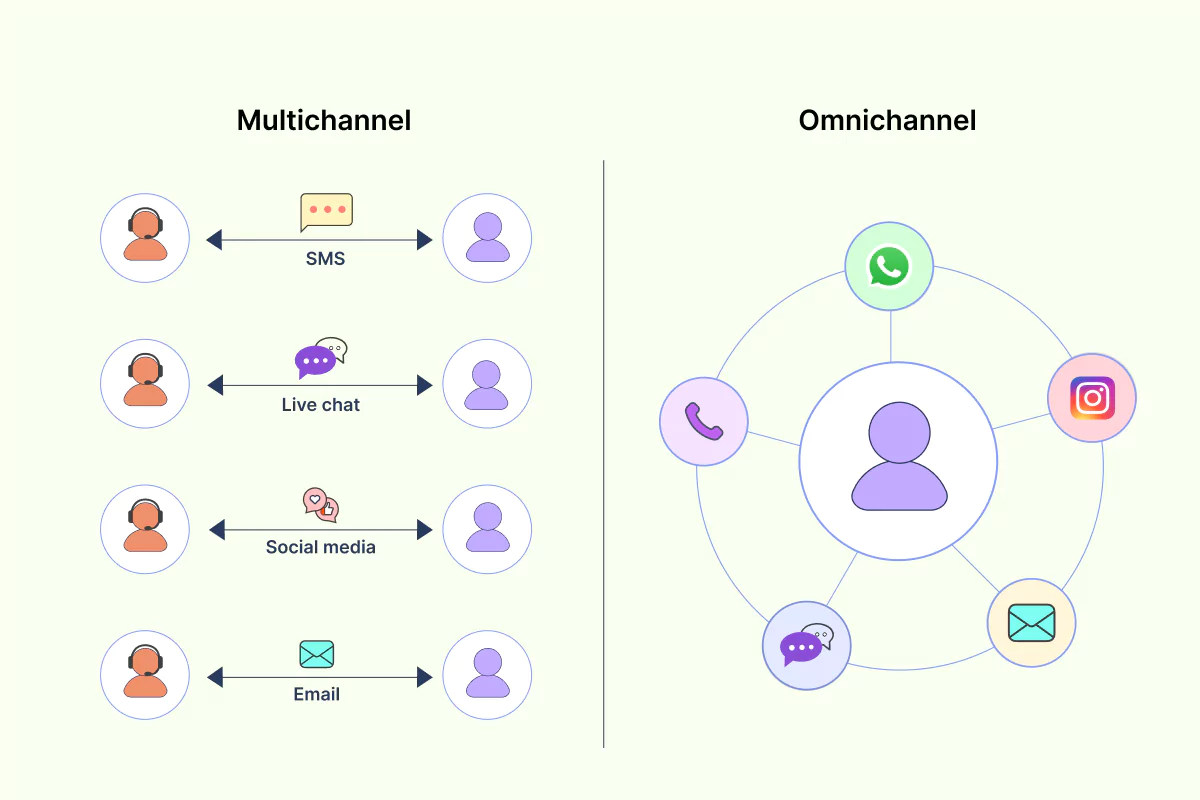
Example case:
Picture this: A customer contacting your business via Facebook Messenger to report an issue. A day later, they follow up via email to check on the status.
- In a multichannel setup, the email support agent may not have access to the earlier Facebook conversation. As a result, they ask the customer to explain the issue again.
- In contrast, in an omnichannel system, the email support team has a unified view of the entire conversation history. They can pick up right where the Facebook interaction left off, offering a smooth, personalized experience.
Data synchronization and management
All customer data is synchronized in real time across platforms, ensuring accurate and up-to-date records at all times in omnichannel support.
Agents can easily access support history, previous interactions, and transactions in a centralized place. This allows for personalized conversations and efficient support.
Whereas in multichannel support, customer data is scattered and stored separately in each system or tool, leading to some critical information being missing or outdated.
Sample situation:
Let’s say: A customer wants to update the shipping address for an online order.
- In a multichannel setup, the customer updates their address via the app. However, when they call support, the agent doesn’t have access to that update and asks the customer to provide the new address, causing confusion and unnecessary repetition.
- In an omnichannel approach, the customer updates their address through the mobile app. Later, when they call customer support to confirm, the agent can immediately see the updated information in the system and reassure the customer that the order will be delivered to the correct address.
Agents or team collaboration
In omnichannel support, agents work from a shared dashboard, which provides complete visibility into client interactions across all customer touchpoints. This improves collaboration and enables more informed, tailored responses.
In multichannel customer support, agents are limited to the channel they manage. Cross-team collaboration is difficult without access to the full conversation history, and responses may lack context.
Illustrative scenario:
Picture this: A customer contacts technical support about a billing issue.
- In a multichannel setup, the support agent escalates the issue to the billing department. However, because the two teams use separate systems, the billing team cannot access the original conversation. They either have to contact the support team for details or ask the customer to repeat the issue, causing delays.
- With an omnichannel support, both teams work within a shared system. The billing department can instantly view the customer’s profile, ticket history, and internal notes. When they receive the escalated issue, they already understand the context and can respond quickly, without needing to backtrack.
This shared visibility enables smooth handoffs, faster resolution, and a more cohesive customer experience.
Quality of customer experience
In omnichannel support, customers can conveniently pick up where they left off, even if they switch channels. Their conversation history follows them, making the interaction smoother and more personalized.
On the other hand, Multichannel support experiences can feel disconnected, requiring customers to repeat themselves when switching channels, which can lead to frustration and longer resolution times.
Sample case:
Imagine this: A customer reports a payment issue through live chat in your mobile app. Later, they follow up on Twitter to check the status.
- In a multichannel approach, the social media team may not have access to the earlier chat conversation. This forces the customer to repeat the issue, leading to delays and a frustrating experience.
- In an omnichannel system, the team handling social media requests can also access the complete chat history across channels. They respond with a personalized update, picking up where the conversation left off—no repetition needed.
This seamless continuity not only speeds up resolution but also shows the customer their time and concerns are valued—hallmarks of excellent service and strong brand trust.
Customer journey mapping
In omnichannel support, customer journeys are centralized and continuous. Every interaction across all channels is recorded and connected, giving businesses a complete 360 customer view from first contact to resolution.
This allows support teams to understand behavior patterns, anticipate needs, and deliver more proactive, personalized customer service.
Tracking the customer journey is disconnected and incomplete in multichannel strategies. Since each channel operates independently, it’s difficult to piece together a full picture of the customer’s experience.
This lack of visibility can lead to missed opportunities, inconsistent service, and a less cohesive support strategy.
Use case:
Picture this: A customer browsing your website to compare subscription plans. Curious, they initiate a live chat to ask a few questions and then visit a physical branch to complete the signup.
- In a multichannel setup, each interaction is siloed. The branch staff likely cannot access the customer’s online activity or chat history. As a result, the customer has to repeat their questions and preferences, making the experience feel disconnected and inefficient.
- Meanwhile, in an omnichannel approach, all touchpoints are connected. When the customer arrives at the branch, the staff can instantly view their browsing history, chat transcript, and selected plan preferences. They can greet the customer by name, continue the conversation seamlessly, and even offer a personalized promotion.
Omnichannel approach vs multichannel approach: Which is best?
Choosing between a multichannel and omnichannel customer support strategy isn’t just a matter of preference—it’s a decision that can significantly shape your customers’ experience and your business outcomes.
Research shows that businesses with strong omnichannel support strategies retain an average of 89% of their customers (BusinessDasher).
Additionally, customers who engage across multiple channels have a 30% higher lifetime value compared to those who use just one.
These numbers highlight the growing importance of these two support strategies. As you evaluate which approach to implement, consider the following factors.
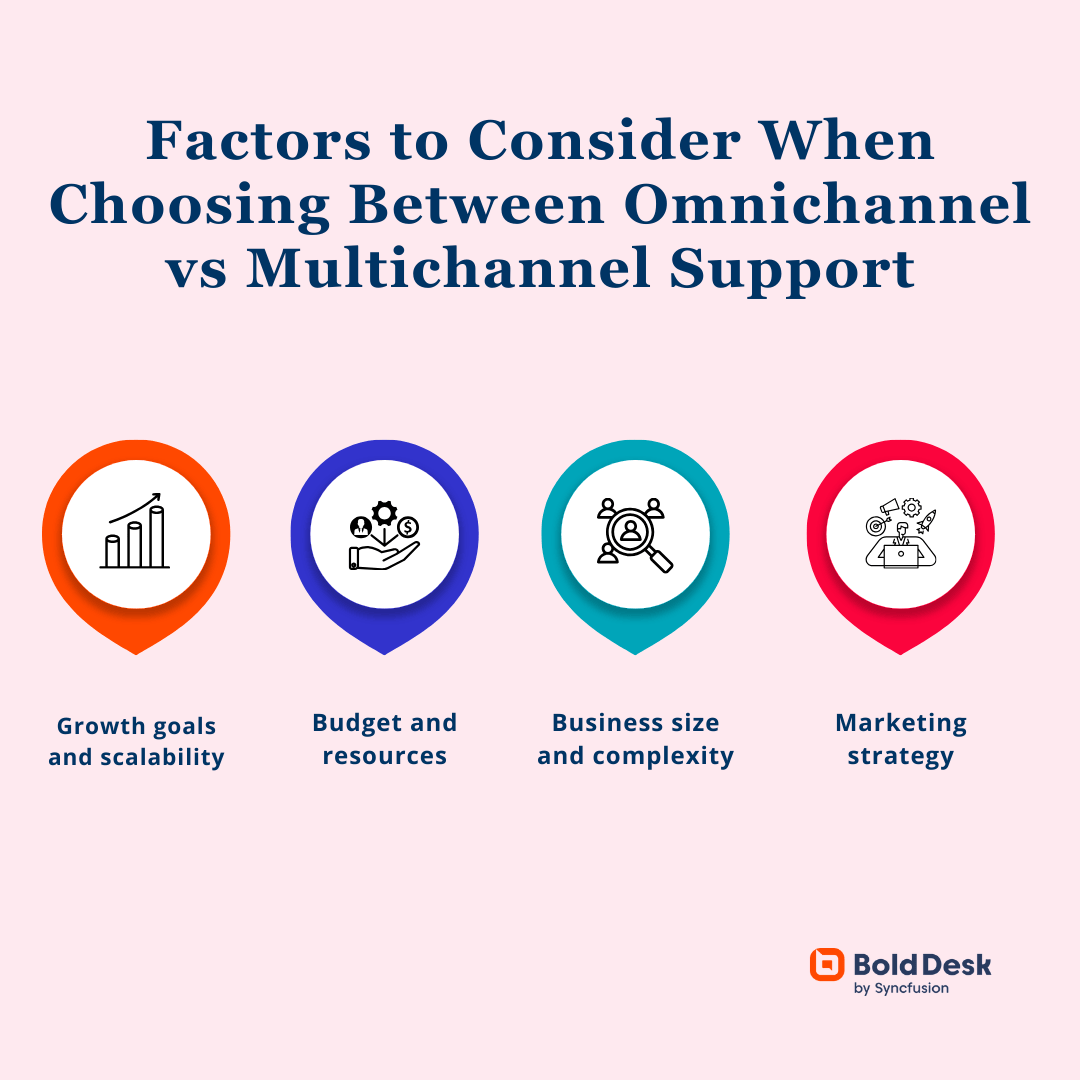
Growth goals and scalability
Consider your future vision. Are you aiming to scale support operations, personalize customer experiences, or gain deeper insights?
If yes, omnichannel provides an integrated foundation for growing smarter and serving better. If your immediate priority is simply expanding your reach across multiple platforms, multichannel may be the best approach.
Budget and resources
An omnichannel approach requires more capital and setup complexity but offers higher long-term ROI, making it better suited for larger enterprises.
In contrast, a multichannel strategy is ideal for startups or small businesses with limited budgets—it’s affordable, easy to implement, and supports platform presence with minimal investment.
Business size and complexity
Larger organizations or those with complex customer journeys typically benefit more from an omnichannel setup, which offers a unified view and deeper reporting and analytics insights.
Small to mid-sized businesses with fewer channels and simpler workflows may find multichannel easier to manage and more efficient.
Marketing strategy
Omnichannel marketing integrates all channels, providing consistent messaging and a unified approach to customer engagement. It simplifies performance tracking and comparison, giving marketers a holistic view of campaign success.
In contrast, multichannel marketing manages each channel separately, tailoring messages for each, and tracking performance individually. This approach requires more time and effort to coordinate, making it more labor-intensive and less efficient overall.
Choosing the right strategy: Multichannel vs omnichannel customer support
Deciding between multichannel and omnichannel support goes beyond selecting tools—it’s about shaping better customer experiences.
For early-stage startups, multichannel support is a practical way to connect with customers. But as your business grows and customer requests increase, efficient tracking becomes crucial. Omnichannel support centralizes interactions, enabling consistent, personalized service at scale.
BoldDesk offers a powerful omnichannel support solution that is easy to implement for small and mid-sized businesses and built to scale effortlessly as your organization grows.
Ready to elevate your support experience? Contact our support team to learn how BoldDesk’s omnichannel support can transform your customer journey.
Which strategy works best for your business—multichannel or omnichannel? Share your thoughts in the comments below!
Related articles
- Next-Level Customer Care in BoldDesk: Live Chat and Omnichannel Support for Seamless Service
- Omnichannel Customer Engagement: Unifying Your Support Channels
- 9 Effective Customer Experience Optimization Strategies
Multichannel vs omnichannel customer support FAQs
The following are some of the important KPIs for both multichannel and omnichannel customer support:
- Net promoter score (NPS)
- Customer satisfaction score
- Average handle time
- Call abandonment rate
Omnichannel support is essential for meeting modern customer expectations for seamless experiences.
It enables agents to work more efficiently by providing complete context for each support interaction, facilitates personalized service delivery, and helps businesses stand out in competitive markets.
If your customers use multiple channels to reach you and expect a consistent experience, it may be time to consider switching to omnichannel support.
Common signs include frequent customer complaints about repeating themselves or confusion across support channels.
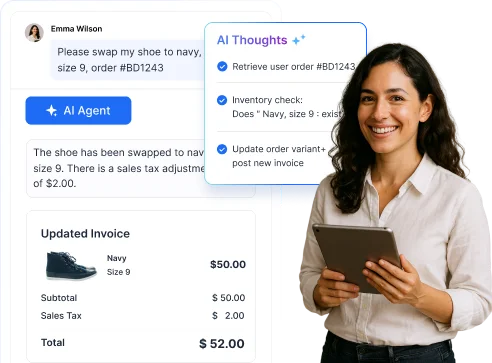


















 Email Ticketing System
Email Ticketing System Shared Inbox Software
Shared Inbox Software Multi Brand Help Desk
Multi Brand Help Desk Internal Help Desk Software
Internal Help Desk Software Trouble Ticketing Software
Trouble Ticketing Software Mobile Help Desk
Mobile Help Desk 









